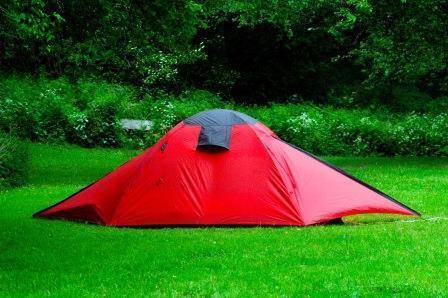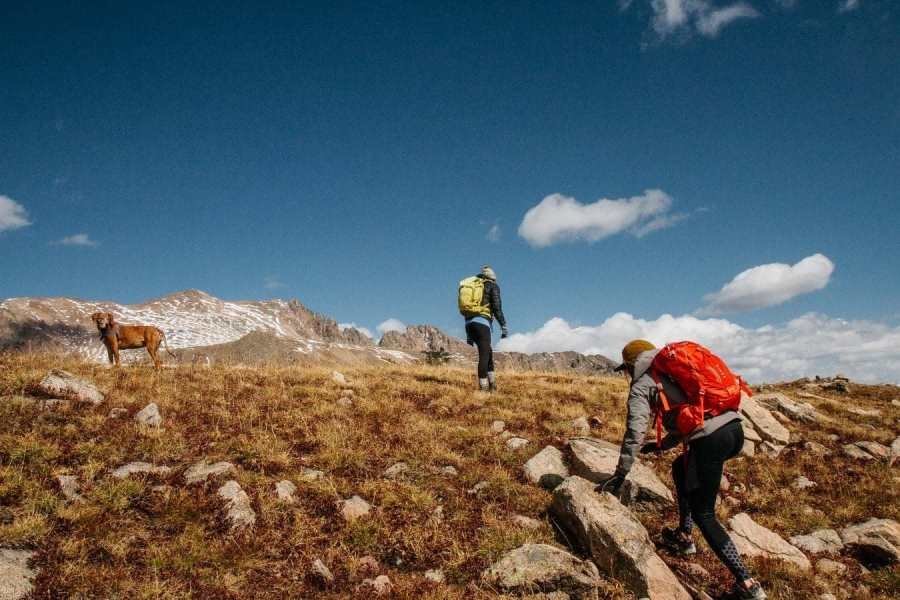When the pandemic started and everyone had fewer indoor options, hiking became a new hobby for many people. And that’s great. We want more people out hiking. But what is not so great is that having more hikers has resulted in crowded hiking trails.
I don’t enjoy crowded hiking trails, but I’ve found a few tricks to make hiking more enjoyable while avoiding the crowds. Here are a few things I’ve learned about how to find less crowded trails or How to Avoid Crowded Hiking Trails.

Choose The Trail Less Traveled
Some of my favorite hiking trails are the ones that are less traveled. I spent the first few months of the pandemic hiking a “secret” trail I found between trails. I had to climb up some rocks and cut between trails to find it, but I only saw five other people on it in six months.
Many hiking areas have a large number of trails from which to choose. The most popular ones are named, marked, or have landmarks to visit.
Everyone is taking the yellow, blue, and pink trail, but how about the unmarked one that you see off to the side?How about the secret one you heard about that has an old moonshine cave and was supposedly the site of a shootout? Look it up online and try it out.
Choose Trails Near the Emptiest Parking Lot
If your favorite hiking spot has multiple parking areas, drive around to all of them and choose a trail that has fewer cars in the parking lot.
Sometimes people don’t know about the other parking areas. Thus they haven’t found the other trails.
Other times, people are looking for a certain experience like hiking up a mountain or having a certain view. Often, the lots nearer the top or farther away from the views are emptier.
Go During Non-Peak Times
Most people hike on the weekends, holidays, and during the middle parts of the day. Choose other days and times for your hikes.
Weekdays
Most trails are more lightly traveled during the weekday. You’ll find fewer people on the trail during the hours that most people are at work or school.
Evenings
Work and school can get in the way of our pleasure on weekdays. But during the summer, it’s easy to schedule a hike on a weekday in the evening since the sun is out longer.
When the days are shorter, you can still hike later if you remember to bring a headlight or flashlight. Although, it’s probably a better idea to hike in the dark only if the trail is a familiar one.
Sunrise
How about going for a sunrise hike? You’ll want to choose a trail you know well with an eastward-facing view. Time your hike so you arrive at your viewing spot just as the sun is rising.
At some times of the year, you’d still have time to go home and shower before work or school.
Early Morning
If hiking in the dark to see the sunrise isn’t for you, early mornings are still less crowded whether it’s a weekend or a weekday. Hike while everyone’s still in bed or lounging around at home in their pajamas.
Weather It
Have you ever canceled a hike because it was raining or snowing? So do most other hikers.
Don your rain boots and rain poncho or put on cold weather hiking gear and snowshoes and head out for a unique hiking adventure.
Enjoy the satisfaction of being the first one to make tracks in the newly-fallen snow.
Avoid State or National Park Trails

State parks and national parks usually have more hikers than other places. If you want to avoid crowds, choose a hiking trail elsewhere.
Anymore, national parks have hoards of people during the summer months, so if you must go, try other seasons.
If you must go to a state or national park, try to choose trails and times that are less popular.
Find Trails the Old Fashioned Way
These days, everyone is using apps like All Trails to find trails to hike. Some of the best-uncrowded trails are ones I’ve found the long way: through maps and books.
You can use paper maps, but I like to use online maps. I’ve bookmarked so many places to try just by zooming in on green spaces in online topographical maps. Many lakes and forests have trails. After you’ve found a possible spot, do a little research to find out if it has a hiking trail.
Especially if you live in an area with lots of hiking trails, your local bookstore may stock books full of information about how to find hiking trails or waterfalls off the beaten path. Be ready for directions that have you driving down a dirt road, parking your vehicle in front of a horse pasture, and walking west until you see the fence with the red gate.
Hike Farther
Many casual day hikers don’t plan to go more than three to five miles down the trail. The farther you go, the fewer hikers you’re going to see.
If you choose a longer trail and plan to make it a multi-day hike, you’ll probably see fewer hikers the deeper you get.
Does the trail have more than one trailhead? Choose a trailhead farther along the trail or away from a central hub rather than the one at the beginning of the trail.
Choose More Difficult Trails
Choosing a harder trail can also help you avoid crowds.
How about that two-mile hike with a 2000-foot elevation gain? What about that hike with water crossings that requires you to wade in above your knees? How about a solo hike on a trail you could never take your kids to because it’s listed as “hard” and has crazy reviews?
Final Thoughts on Avoiding Crowded Trails
Avoiding crowded hiking trails isn’t impossible. It just requires thinking differently than the other hikers out there. Learning to find different hiking trails and choose different times than the other hikers will help you find less crowded trails.




